Advantages of Using Flap Discs: Why They’re a Grinder’s Best Friend
When it comes to grinding and finishing metal, flap discs have become incredibly popular, and for good reason. They offer several advantages over traditional grinding methods, making them a versatile tool in any metalworker’s arsenal.
The primary advantages of using flap discs on a grinder include their ability to grind and finish in a single step, resulting in time savings; their flexibility, which allows for contouring and blending; the cooler grinding action they provide, reducing workpiece heat buildup and discoloration; their lighter weight and reduced vibration compared to grinding wheels; and their longer lifespan due to the continuous exposure of new abrasive grain as the flaps wear down.
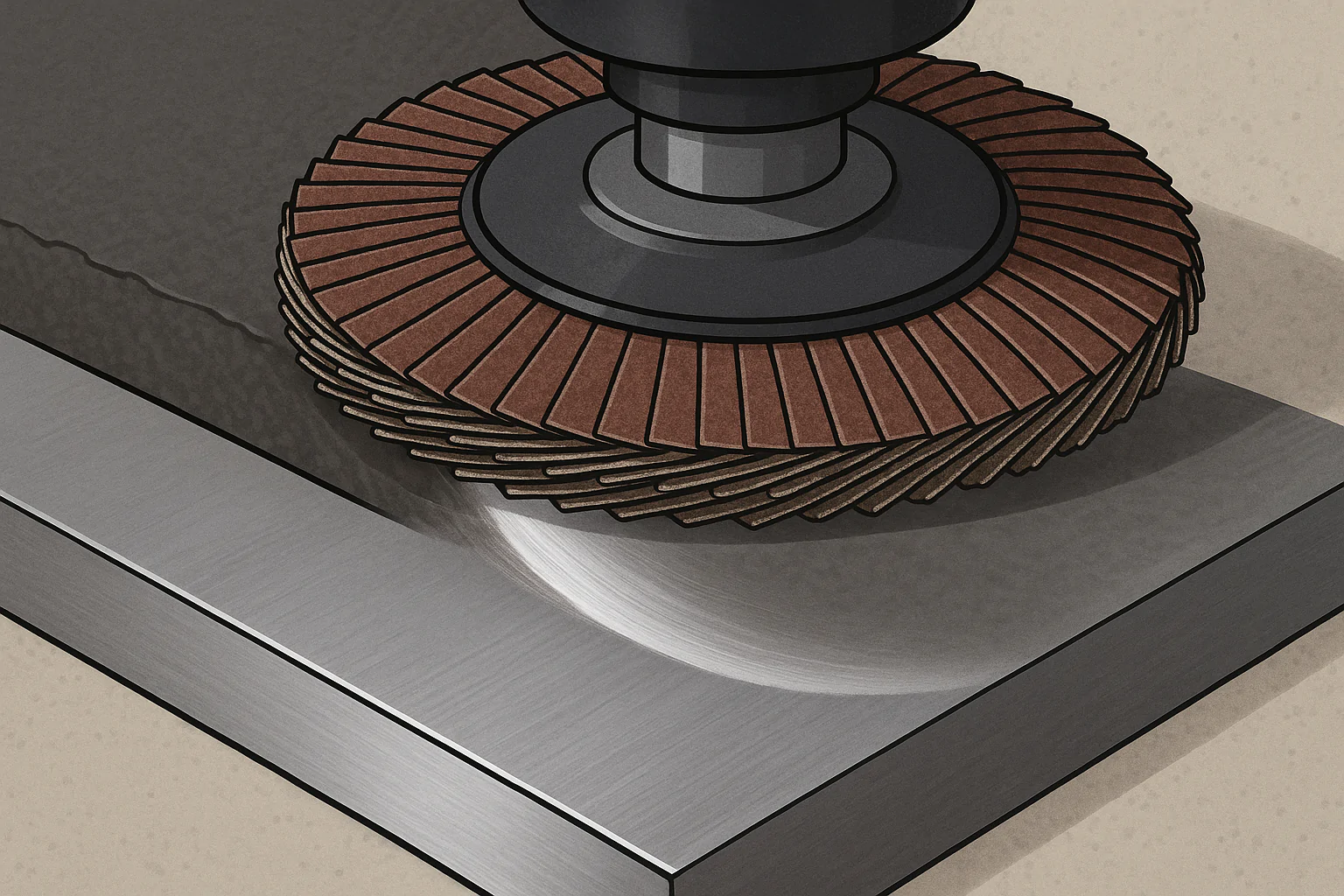
Illustrating how a flap disc blends a metal surface.
These advantages contribute to more efficient work, a better finish, and a more comfortable grinding experience.
What is the purpose of the flap disc on the grinder?
Why use a flap disc instead of a standard grinding wheel on an angle grinder? What specific function do they serve?
The purpose of a flap disc on an angle grinder is to provide a versatile abrasive tool capable of both material removal (grinding) and surface finishing (sanding/blending) in a single operation. Unlike rigid grinding wheels that focus on aggressive stock removal, flap discs, with their overlapping abrasive flaps, are designed to grind away material while simultaneously leaving a smoother, more blended finish, making them ideal for tasks like weld blending, deburring, and surface preparation.
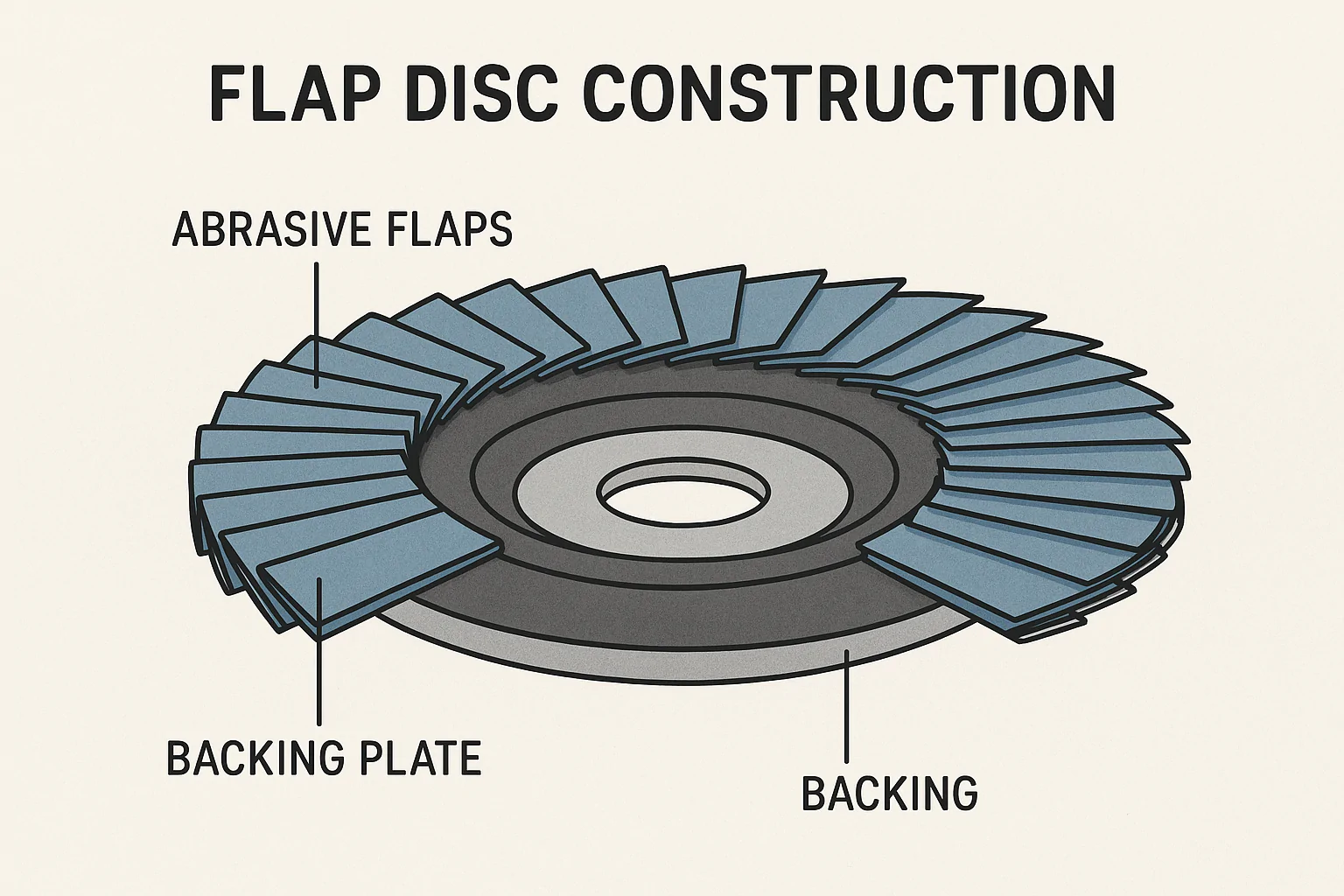
Diagram showing the layered construction of a flap disc.
Flap discs essentially combine the functions of a grinding wheel and a fiber disc into one tool. A traditional grinding wheel is made of bonded abrasive material and is primarily used for aggressive grinding – removing a lot of material quickly. However, it leaves a rough surface that often requires subsequent steps with sanding discs to refine. Flap discs, like those from NOVOGRIT, feature multiple layers, or flaps, of abrasive cloth. As the disc spins and is applied to the workpiece, these flaps wear down, continuously exposing fresh, sharp abrasive grains. This design allows the flap disc to grind away metal, concrete, or other materials, while the flexibility of the flaps helps to blend and smooth the surface simultaneously. This "grind and finish" capability saves time by reducing the need to switch between different abrasive products. They are particularly effective for tasks where you need to remove some material (like a weld bead) and immediately blend it into the surrounding surface for a clean, finished look. The angle at which you hold the grinder can influence the action; a steeper angle emphasizes grinding, while a flatter angle emphasizes blending.
What is the difference between a grinding disc and a flapper disc?
The terms "grinding disc" and "flapper disc" (another name for flap disc) are sometimes used interchangeably, but they are distinct tools. What sets them apart?
The main difference between a grinding disc (traditional grinding wheel) and a flapper disc (flap disc) lies in their construction, rigidity, and primary function. A grinding disc is a thick, rigid wheel made of bonded abrasive designed for heavy, aggressive material removal and cutting. A flapper disc, conversely, is made of overlapping flaps of abrasive cloth on a backing, making it more flexible and primarily used for blending, finishing, deburring, and less aggressive grinding.
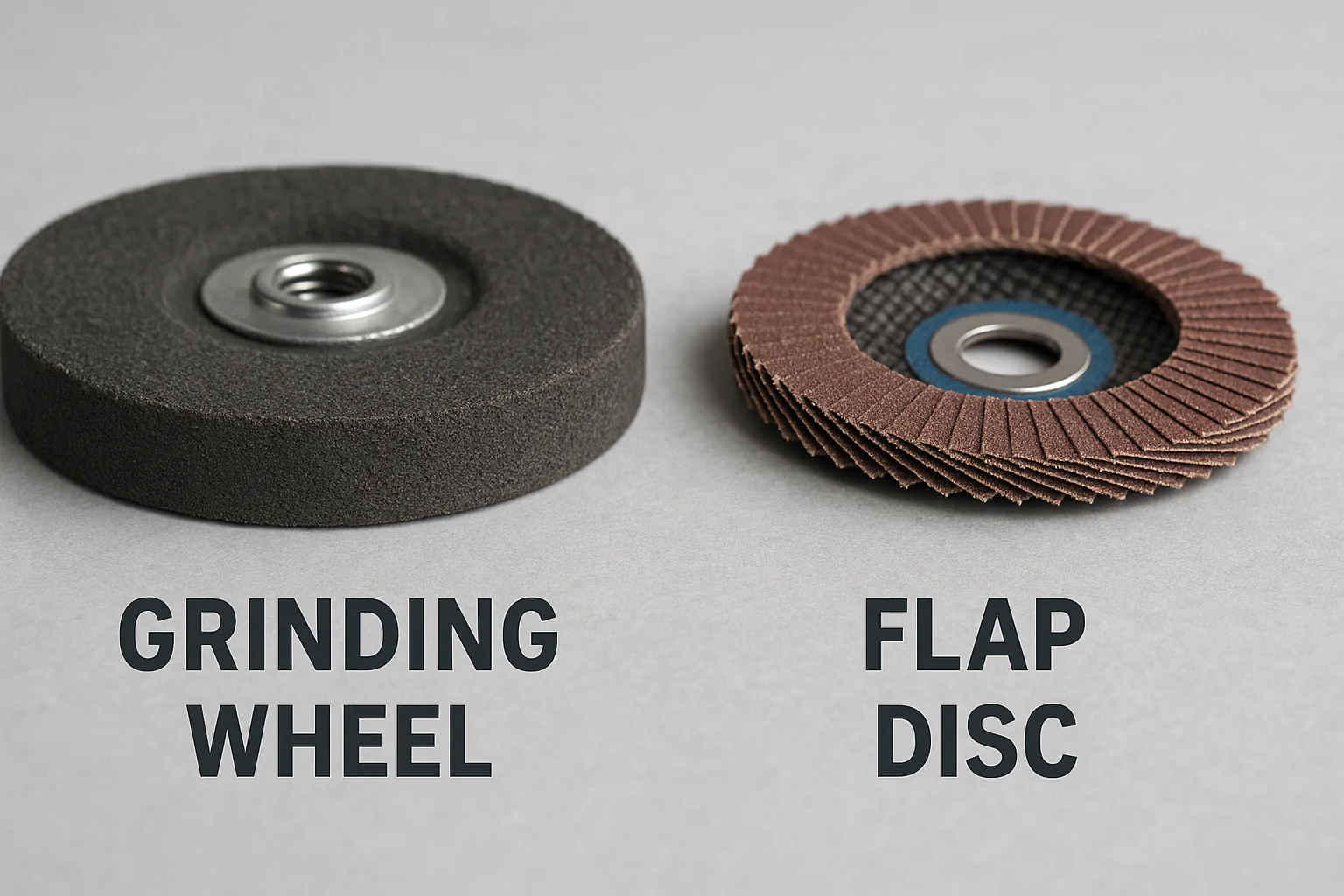
Physical comparison of a grinding wheel and a flap disc.
Think of the difference in how they interact with the material. A grinding wheel presents a solid, unforgiving abrasive surface. When pressed against metal, it cuts aggressively, removing significant amounts of material and generating considerable heat and sparks. It’s the tool of choice for taking down large amounts of metal, like preparing a bevel for welding on thick steel or cutting through metal. Its rigidity makes it less suitable for achieving smooth, blended finishes, as it can easily create gouges or uneven surfaces if not handled carefully. A flap disc is much more forgiving. The individual flaps have some give, allowing the disc to conform slightly to the shape of the workpiece. This flexibility, combined with the shearing action of the overlapping flaps, results in a smoother finish than a grinding wheel of the same nominal grit. Flap discs are better suited for tasks where surface finish is important, such as smoothing welds, removing rust and paint, deburring edges, and surface conditioning. While they do remove material, they are generally less aggressive than a grinding wheel designed for heavy stock removal. The choice between the two depends on whether your priority is rapid, heavy material removal (grinding wheel) or a combination of material removal and surface finishing (flap disc). Quality flap discs, like those from NOVOGRIT, provide excellent performance for the latter.
What are the advantages of grinding wheel?
While flap discs have gained popularity, traditional grinding wheels still have their place. What are the advantages of using a traditional grinding wheel?
The primary advantages of using a traditional grinding wheel include its superior speed and aggression for heavy material removal on metals, its rigidity which allows for precise beveling and shaping, and its effectiveness for cutting through thick metals. Grinding wheels are designed for maximum stock removal where speed is the main concern and the final surface finish is less critical or will be achieved through subsequent steps.
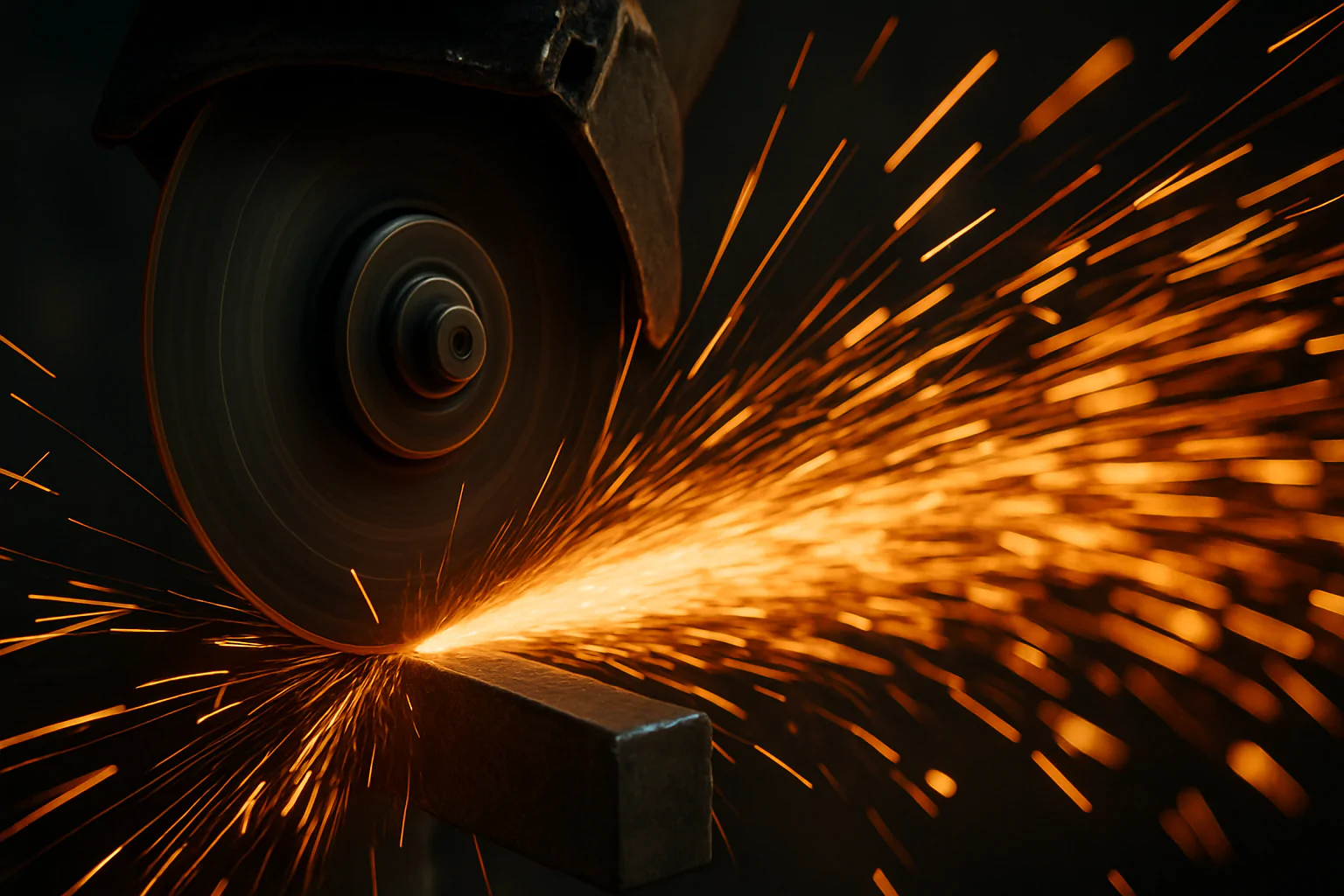
A grinding wheel aggressively cutting through metal.
Despite the rise of flap discs, grinding wheels remain indispensable for certain tasks. Their most significant advantage is their sheer cutting power and speed for heavy stock removal. When you need to grind down a large, bulky weld bead in a hurry, or put a deep bevel on a thick steel plate, a grinding wheel will typically get the job done much faster than a flap disc of comparable size and grit. The rigid nature of the grinding wheel also provides greater stability for certain operations, such as creating consistent bevels or grinding precise shapes. Furthermore, thin grinding wheels specifically designed for cutting (often called cut-off wheels) are the go-to tool for slicing through metal efficiently. Flap discs can cut to some extent, but they are not designed for making deep cuts like a dedicated cutting wheel. While grinding wheels leave a rougher finish and generate more heat and vibration than flap discs, their ability to remove large volumes of material quickly in demanding applications ensures they remain a vital tool in metal fabrication and construction. Choosing the right tool, whether a grinding wheel or a flap disc from a reliable supplier, depends on the specific demands of the task.
Conclusion
Flap discs offer key advantages like combined grinding and finishing, flexibility, and cooler operation. Their purpose is to efficiently remove material and blend surfaces in one step, differing from rigid grinding wheels used for heavy material removal. Both tools have distinct benefits depending on the task at hand.
You may also be interested in:

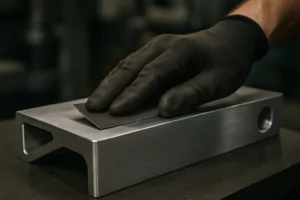
Best Sandpaper for Aluminum: NOVOGRIT's Guide to Flawless Finishes
What is the Best Type of Sandpaper to Use on Aluminum? Do you find yourself frustrated by sandpaper that gums up instantly when you try to smooth aluminum? It is
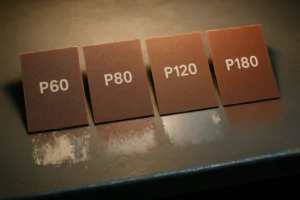
Best Sandpaper for Paint Removal: Grits, Types, & Tips | NOVOGRIT
What is the Best Sandpaper for Removing Paint? Are you tired of staring at chipped, peeling paint on your furniture, walls, or even your car? It’s a common problem, and
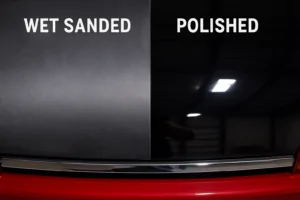
Automotive Wet Sanding: Supplies, Liquids & Best Sandpaper
Automotive Wet Sanding Supplies: What Do You Really Need? Wet sanding is a crucial technique in automotive refinishing, used to achieve a flawlessly smooth surface before painting or polishing. Unlike
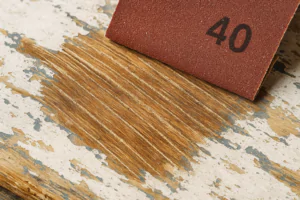
Best Sandpaper for Paint Removal & Grit Guide
What Is the Best Sandpaper for Removing Paint? Removing old paint can be a tedious job, but using the right sandpaper makes all the difference. It’s not just about grit;
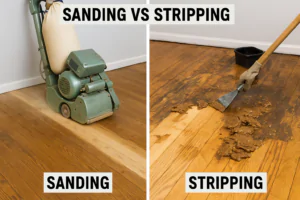
Hardwood Floor Sanding: Screen vs. Sandpaper & Best Practices
Sanding Screen vs. Sandpaper for Hardwood Floors: Which is Best? When you’re tackling hardwood floor projects, choosing the right abrasive is crucial for achieving a smooth, professional finish. Both sanding
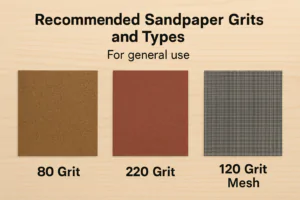
Paper Backing vs. Mesh Sanding Discs: Which Abrasive to Choose?
Paper Back vs. Mesh Sanding Discs: Which One Should You Pick? Choosing the right sanding disc backing can significantly impact your project’s efficiency and finish quality. Paper-backed discs are a
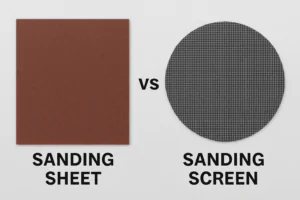
Sanding Mesh vs Paper: Which is More Economical and Better?
Is Sanding Mesh More Economical Than Sandpaper? Comparing Abrasive Costs When stocking up on abrasives, cost is always a factor. Paper sandpaper has traditionally been the standard, but newer mesh
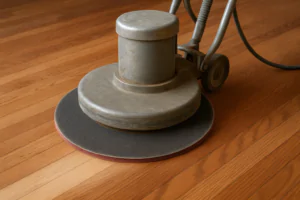
Sanding Nets & Screens Use Cases: When to Choose Mesh Abrasives
Sanding Nets and Screens: What Are Their Best Use Cases? When you encounter sanding nets or screens, you might wonder where they fit into your sanding projects. Unlike traditional solid-backed
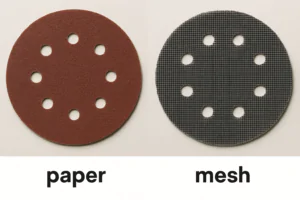
Paper vs. Mesh Sanding Discs: Which Abrasive to Choose?
Paper vs. Mesh Sanding Discs: Which Should You Buy? Choosing the right abrasive disc is essential for efficient and effective sanding. Two primary types dominate the market: traditional paper-backed discs
